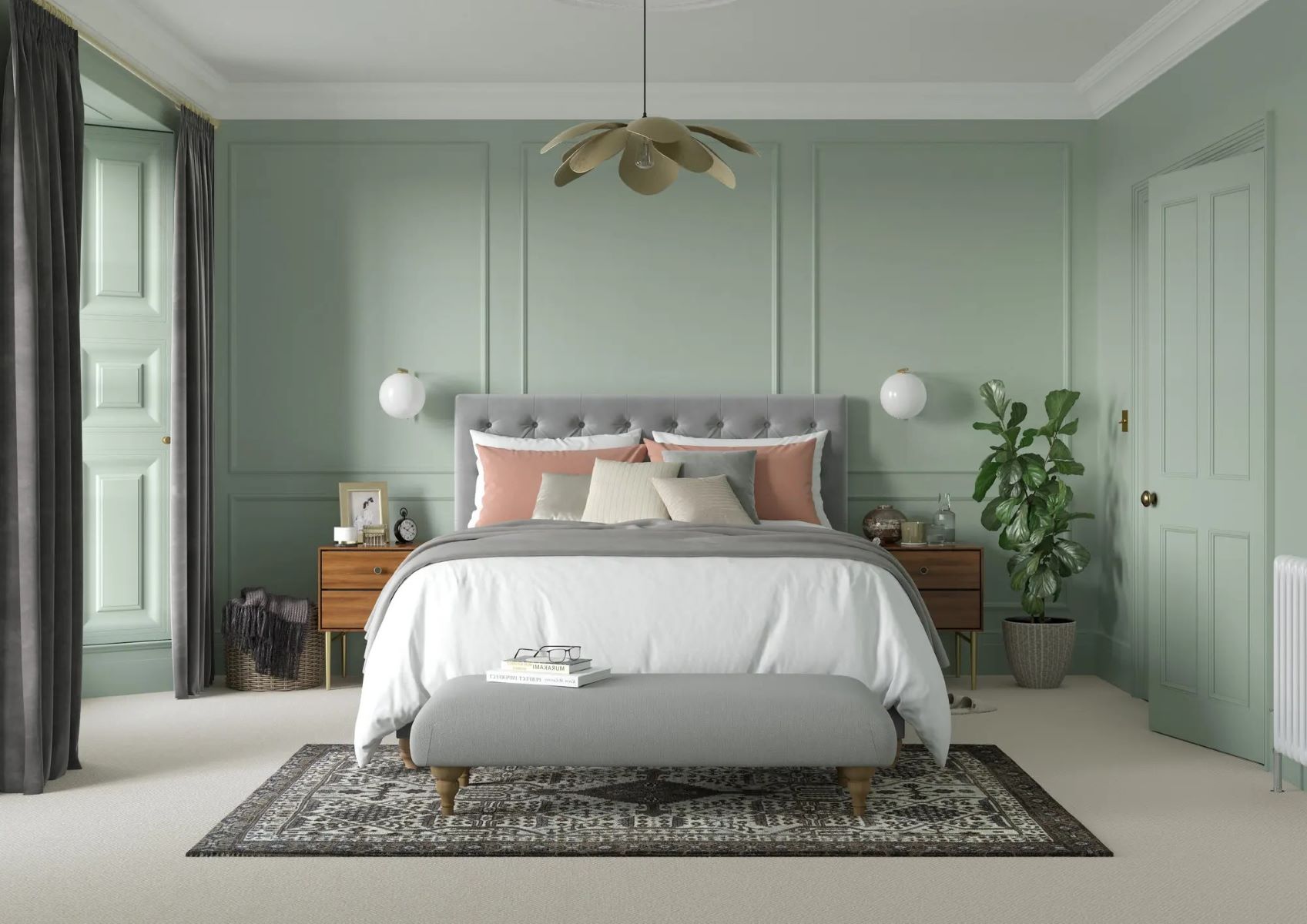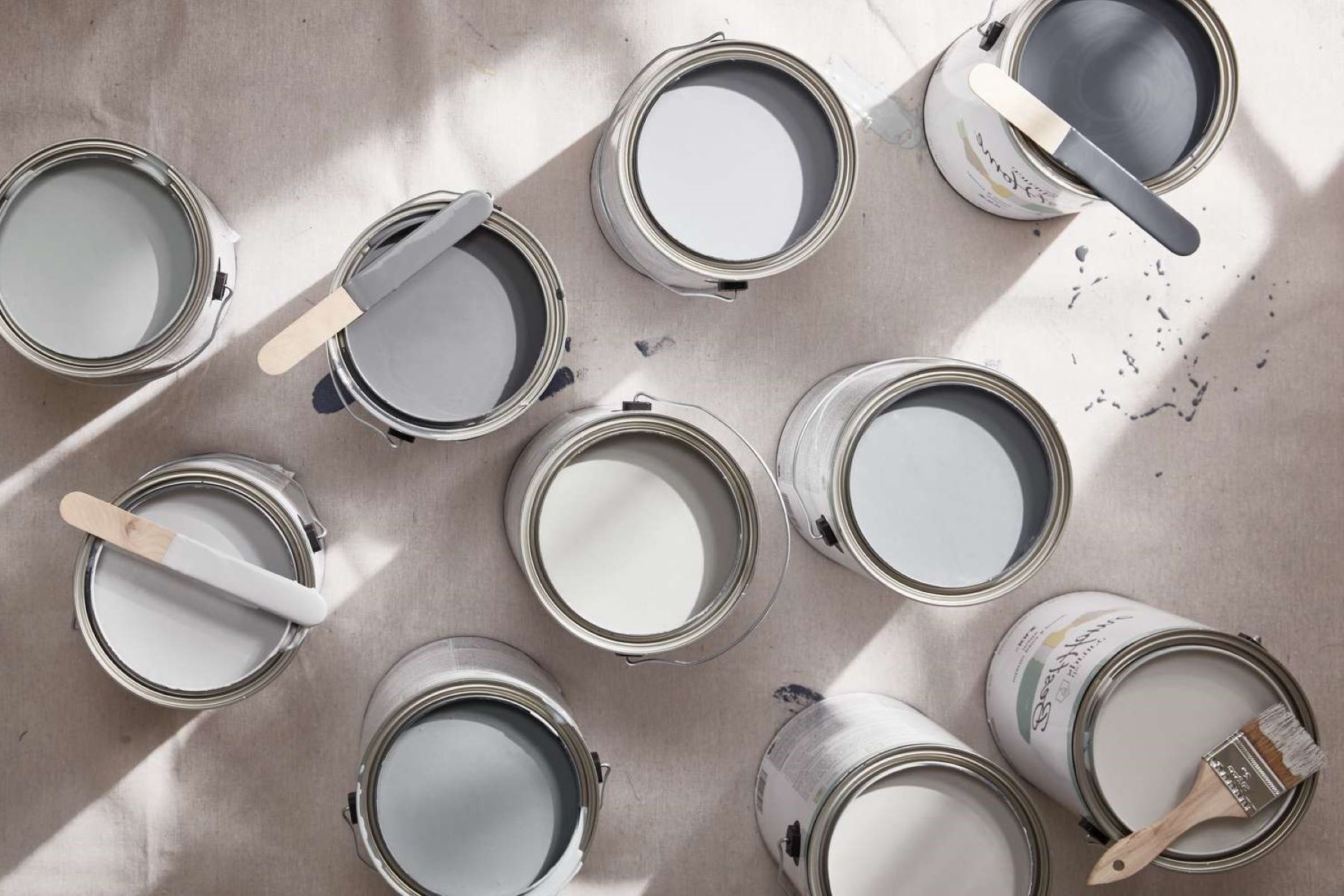Home>Arts and Culture>How To Make Sage Green


Arts and Culture
How To Make Sage Green
Published: March 4, 2024
Learn the art of creating sage green with our comprehensive guide. Explore the cultural significance and various artistic techniques in this arts and culture tutorial.
(Many of the links in this article redirect to a specific reviewed product. Your purchase of these products through affiliate links helps to generate commission for Regretless.com, at no extra cost. Learn more)
Table of Contents
Introduction
Sage green is a soothing and versatile color that has gained popularity in interior design, fashion, and art. Its subtle blend of gray, green, and a hint of blue evokes a sense of tranquility and natural beauty. Whether you're looking to refresh your living space with a calming hue or add a touch of elegance to your artwork, mastering the art of creating sage green can be a rewarding endeavor.
In this comprehensive guide, we will delve into the art of making sage green from scratch. From understanding the nuances of this enchanting color to selecting the right pigments and mastering the mixing process, we will walk you through each step with precision and creativity. By the end of this journey, you will be equipped with the knowledge and confidence to infuse your projects with the timeless allure of sage green.
So, let's embark on this captivating exploration of color and creativity, as we unravel the secrets of crafting the perfect sage green hue. Whether you're a seasoned artist seeking to expand your palette or a DIY enthusiast eager to transform your living space, this guide will empower you to bring the enchanting essence of sage green into your world.
Understanding Sage Green
Sage green, a timeless and versatile color, is revered for its calming and sophisticated qualities. This enchanting hue derives its name from the silvery-green leaves of the sage plant, evoking a sense of tranquility and natural beauty. Comprising a delicate blend of gray, green, and a subtle hint of blue, sage green embodies a serene and earthy aesthetic that seamlessly complements a variety of design styles and artistic expressions.
The unique appeal of sage green lies in its ability to evoke a feeling of harmony and balance. Its muted and understated nature makes it an ideal choice for creating a serene and inviting atmosphere in interior spaces. Whether used as a wall color, upholstery fabric, or accent piece, sage green has the remarkable ability to infuse a sense of calm and sophistication into any environment.
In the realm of art and design, sage green serves as a versatile and elegant option for expressing creativity. Its understated yet captivating presence allows artists to convey a wide range of emotions and concepts, from tranquility and balance to natural beauty and timeless elegance. Whether used in paintings, sculptures, or mixed media art, sage green adds a touch of refinement and sophistication to any artistic composition.
Furthermore, sage green holds a special place in the world of fashion and textiles. Its subtle and soothing undertones make it a popular choice for clothing, accessories, and home decor. From soft, flowing fabrics to tailored ensembles, sage green exudes a sense of understated luxury and timeless appeal, making it a beloved choice for both casual and formal attire.
In essence, understanding sage green entails appreciating its harmonious blend of gray, green, and blue, and recognizing its ability to evoke a sense of tranquility, sophistication, and natural beauty. Whether used in interior design, art, or fashion, sage green stands as a timeless and versatile color that continues to captivate and inspire with its enchanting allure.
Choosing the Right Pigments
Selecting the right pigments is a crucial step in the process of creating sage green. The harmonious blend of gray, green, and a hint of blue requires careful consideration of the individual pigments that will come together to form this enchanting hue. When choosing pigments for sage green, it's essential to prioritize quality and compatibility to achieve the desired depth and richness of color.
To begin, it's important to identify the primary colors that will serve as the foundation for mixing sage green. Green, blue, and gray are the key components that will converge to produce the nuanced tones of sage green. When selecting green pigments, opt for shades that lean towards the muted and earthy spectrum, such as sap green or olive green. These hues provide a solid base for capturing the natural essence of sage green.
Incorporating blue pigments with subtle undertones is equally vital in achieving the desired balance of coolness and depth in sage green. Look for blues that possess a touch of gray or teal to infuse the color with a serene and sophisticated quality. Additionally, selecting a high-quality gray pigment with a subtle warmth can contribute to the overall complexity and depth of sage green, elevating it from a simple greenish hue to a refined and captivating color.
When choosing pigments, consider the transparency and opacity of each color, as well as their compatibility when mixed together. Transparent pigments can add luminosity and depth to the final hue, while opaque pigments may contribute to its coverage and texture. By carefully assessing the characteristics of each pigment, you can ensure that they harmonize seamlessly to produce a sage green that exudes elegance and allure.
In essence, selecting the right pigments for creating sage green involves a thoughtful exploration of green, blue, and gray hues, prioritizing quality, transparency, and compatibility. By choosing pigments that embody the serene and sophisticated qualities of sage green, you set the stage for a successful mixing process that will ultimately bring your artistic vision to life.
Mixing the Paint
Mixing the paint to achieve the perfect sage green hue is a delicate and precise process that requires attention to detail and a keen understanding of color theory. To embark on this creative journey, gather the selected green, blue, and gray pigments, along with the necessary painting tools, such as a palette, palette knife, and mixing surface.
Begin by placing a small amount of the chosen green pigment on the mixing surface. This serves as the foundational color from which the sage green will evolve. Next, add a touch of the selected blue pigment to the green, gradually incorporating it in small increments. The blue pigment should be added sparingly, as it plays a crucial role in infusing the mixture with the subtle coolness and depth characteristic of sage green.
As the green and blue pigments blend together, observe the evolving color closely, noting the shifts in tone and saturation. Once the initial blend of green and blue reaches a harmonious midpoint, introduce the chosen gray pigment into the mixture. The gray pigment acts as a balancing agent, imparting a sense of depth and sophistication to the emerging sage green hue.
Throughout the mixing process, it's essential to maintain a balanced approach, carefully adjusting the proportions of each pigment to achieve the desired color harmony. The goal is to create a sage green that exudes a serene and natural allure, evoking the tranquil beauty of the sage plant's leaves.
As the pigments merge and interact, take the time to observe the subtle variations in the mixture, ensuring that the resulting sage green possesses the ideal balance of green, blue, and gray. This attentive approach allows for the refinement of the color, leading to a nuanced and captivating sage green hue that resonates with elegance and sophistication.
Once the desired sage green hue is achieved, take a moment to appreciate the artistry and precision involved in the mixing process. The resulting color should embody the timeless allure and harmonious balance that define sage green, ready to grace your artistic endeavors or interior design projects with its enchanting presence.
Testing the Color
After meticulously mixing the green, blue, and gray pigments to create the alluring sage green hue, it's essential to conduct thorough color testing to ensure that the resulting shade aligns with your artistic vision or design objectives. Testing the color not only allows for the evaluation of its visual impact but also provides insights into how it interacts with different surfaces and lighting conditions.
To begin the testing process, apply the freshly mixed sage green paint to a small, inconspicuous area of the surface or material intended for the final application. Whether it's a canvas, wall, fabric, or furniture piece, this initial application serves as a preliminary assessment of the color's compatibility and visual appeal in the intended environment.
Observe the applied sage green under various lighting conditions, including natural daylight and artificial lighting, to gauge its tonal consistency and vibrancy. The color should maintain its enchanting allure and subtle complexity across different lighting scenarios, ensuring that it retains its serene and sophisticated qualities regardless of the ambient light.
Additionally, consider the interaction of sage green with surrounding colors and elements within the space. Its ability to harmonize with existing decor or artistic compositions is a key factor in determining its suitability for the intended application. Whether it complements other hues or serves as a focal point, the tested sage green should seamlessly integrate into its surroundings, enhancing the overall aesthetic appeal.
Furthermore, assessing the drying process and final finish of the sage green paint is crucial. Note any variations in color intensity or texture as the paint dries, ensuring that the desired hue and surface quality are maintained throughout the drying and curing stages. This meticulous observation allows for adjustments or refinements if necessary, ensuring that the final application achieves the desired visual impact and longevity.
By conducting comprehensive testing of the sage green color, you gain valuable insights into its visual characteristics, compatibility with different surfaces, and interaction with lighting and surrounding elements. This meticulous approach empowers you to make informed decisions regarding its application, ensuring that the enchanting allure of sage green enriches your artistic endeavors or interior design projects with timeless elegance and sophistication.
Applying Sage Green to Your Project
Once you have meticulously crafted the perfect sage green hue and conducted thorough color testing, it's time to embark on the transformative journey of applying this enchanting color to your project. Whether you're adorning your living space with a serene ambiance or infusing your artwork with timeless elegance, the application of sage green holds the potential to elevate your creative vision to new heights.
Interior Design:
When incorporating sage green into your interior design, consider the impact of this soothing hue on the overall ambiance of the space. Whether painting an accent wall, selecting upholstery fabrics, or integrating decor elements, sage green has the remarkable ability to imbue the environment with a sense of tranquility and sophistication. Its understated elegance makes it an ideal choice for creating a serene and inviting atmosphere in living rooms, bedrooms, or home offices. Additionally, consider pairing sage green with complementary colors and natural textures to enhance its visual impact and create a harmonious design scheme that exudes timeless allure.
Artistic Expression:
In the realm of art, sage green serves as a versatile and captivating color for expressing creativity. Whether working with acrylics, oils, watercolors, or mixed media, the application of sage green can evoke a wide range of emotions and concepts. From serene landscapes to abstract compositions, sage green adds a touch of refinement and natural beauty to artistic creations. Experiment with different techniques and brushstrokes to explore the depth and versatility of sage green, allowing its enchanting allure to infuse your artwork with a sense of tranquility and sophistication.
Fashion and Textiles:
In the realm of fashion and textiles, sage green offers a timeless and elegant option for clothing, accessories, and home decor. Whether designing garments, crafting accessories, or selecting upholstery fabrics, the application of sage green adds a touch of understated luxury and sophistication. From flowing dresses to tailored ensembles, sage green exudes a sense of natural beauty and timeless elegance, making it a beloved choice for both casual and formal attire. Infuse your fashion and textile projects with the enchanting allure of sage green, creating pieces that resonate with tranquility and refined elegance.
In essence, the application of sage green to your project opens doors to a world of creativity and sophistication. Whether enhancing interior spaces, infusing artwork with timeless allure, or crafting fashion and textile creations, sage green stands as a captivating color that continues to inspire and elevate creative endeavors with its enchanting presence. Embrace the transformative power of sage green, and let its serene and sophisticated qualities enrich your projects with enduring beauty and elegance.
Read more: How To Make A Ring
Conclusion
In conclusion, the art of making sage green encompasses a captivating journey of creativity, precision, and timeless allure. From understanding the harmonious blend of gray, green, and a hint of blue that defines sage green to meticulously selecting and mixing the right pigments, this process embodies the essence of artistic expression and design finesse.
As we reflect on the intricacies of crafting sage green, it becomes evident that this enchanting hue holds the power to transform interior spaces, elevate artistic compositions, and infuse fashion and textiles with understated elegance. Its serene and sophisticated qualities resonate with a timeless appeal, offering a versatile canvas for creative expression and design innovation.
The journey of creating sage green extends beyond the technical aspects of color mixing and application. It embodies a harmonious balance of tranquility, natural beauty, and refined elegance, inviting individuals to immerse themselves in the captivating world of color and creativity. Whether adorning walls with a soothing ambiance, infusing artwork with timeless allure, or crafting fashion pieces that exude sophistication, sage green stands as a testament to the enduring impact of color in our lives.
As we embrace the transformative potential of sage green, we are reminded of the profound influence of color on our emotions, perceptions, and surroundings. Its ability to evoke a sense of harmony and balance resonates deeply with our innate appreciation for beauty and tranquility. Whether used in interior design, art, or fashion, sage green serves as a timeless companion, enriching our lives with its enchanting presence.
In essence, the art of making sage green transcends the mere act of color creation. It embodies a celebration of elegance, a symphony of tranquility, and a canvas for creative expression. As we embark on our individual journeys of incorporating sage green into our projects and environments, let us carry forward the appreciation for its timeless allure and the transformative power it holds. May the enchanting essence of sage green continue to inspire and elevate our creative endeavors, infusing our lives with enduring beauty and sophistication.













